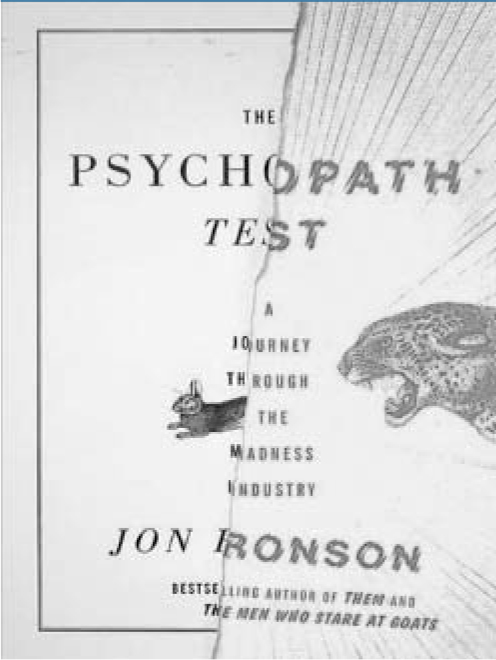
Jon Ronson is a journalist, quite a good journalist, with a nose for a story and a ready wit. The story he describes in this book, ‘a journey through the madness industry’, as it is described on the cover, is quite a convoluted one. It begins with the investigation of a strange package sent to neurologists at University College Hospital, which reads like the beginnings of a John le Carré novel. During this investigation he becomes drawn into the strange world of DSM, scientology and psychopathy. A scientologist friend introduces him to a man who faked madness at Broadmoor Hospital. But of course the man is not mad; he is a psychopath. So our intrepid writer, a latter-day Candide, decides to unravel psychopathy by seeing all the experts in the condition and asking them innocent questions like ‘why does wearing a sharp suit indicate that someone's a psychopath?’ and ‘why do psychopaths dream in black and white?’. Eventually he gets the answer – Bob Hare's psychopath test, and we get all 20 items of the test listed and explained. Armed with this new insight he goes to the guru himself and ends up drinking with Bob ‘in a hotel bar in rural Pembrokeshire’, where he learns how to administer this test as part of a training course. He then spices up his account with a series of interviews with a mass murderer, a corporate chief executive whose main joy was firing people, and an MI5 spy, before returning to Broadmoor to release the man who faked madness, and then returning to the John le Carré mystery, unsolved.
The book is an easy read and seems quite harmless. But it is sloppy and disconnected, and even the author recognises this in a criticism from a colleague, ‘you take a little bit of craziness from up there and a little bit of craziness from over there and then you stitch it all together’. The trouble is that the ‘craziness’ includes not just psychopathy, but schizophrenia, depression, bipolar disorder, drug misuse, LSD treatment-induced conditions, obsessive–compulsive disorder, autism, and attention-deficit hyperactivity disorder, so the uninitiated reader is quickly lost. More botheringly, the book pretends to be factual but uses all the devices of the non-fiction or ‘faction’ novel, with detailed quotations from the people he interviews that are frequently inaccurate (I know, as I have checked) and have been refashioned to make a more rumbustious read. Ronson makes fun of almost everybody he writes about but most of the time he gets away with it as he is equally deprecating about himself. All this would not matter if the book were just a pleasant romp through an uncontentious landscape. But it is not uncontentious; by his writing Ronson trivialises, and in the end stigmatises, not just personality disorder and psychopathy, but the whole of mental illness, in the search for cheap laughs and better sales. I urge him to change tack and use his talents to write a proper non-fiction novel on a subject where his humour can be put to better purpose.



eLetters
No eLetters have been published for this article.